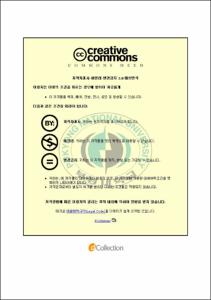이매패의 생물정화기작을 이용한 마산만의 수질개선방안
- Alternative Title
- Water quality management by bio-purification of bivalve, Mytilus galloprovincialis, in Masan Bay
- Abstract
- Masan Bay is a representative semi-closed bay acted as a sedimentation reservoir with a slow current velocity and a poor water circulation in Korea. The pollutants from terrestrial sources into the Masan Bay have apparently environmental pollution problems, such as eutrophication, red tied, and hypoxia.
Korean government has designated Masan Bay as a Special Management Coastal Area in 2000 and is establishing a total maximum daily loads (TMDL) strategy, to accomplish seawater quality II (<2 mg/L COD) in this bay until 2010s'.
But COD has been exceeded the seawater quality Ⅲ(>4 mg/L) and the effect is insufficient because of continual population increase, pollution facilities increase, developing project such as reclamation and filling up of land. Then, an effective management strategy should be needed to improve Masan Bay seawater quality.
Despite various scientific activities such as efforts using marine organisms (seaweed, seagrass, and bivalves) have been performed to improve seawater quality in foreign countries, there is no report available on seawater quality improvement using these organisms with a few fundamental studies in Korea.
Therefore, carrying capacity of Masan Bay is estimated by hydrodynamic model and ecosystem model, material circulation including bivalve in ecosystem is analyzed by the growth model of bivalve. And cost-effective water quality management strategy is derived through selection of location, quantification of bivalve aquaculture farm.
The results showed that the optimum location for bivalve farming is where phytoplankton accumulation by physical processes is maximized and the optimum density and area of bivalve are 35 individuals m-3 and ca. 500 hectare, respectively. When assuming conditions for the optimum growth of bivalve, COD could decrease by up to 18% even without other reduction of pollution loads.
Regarding the sources of pollutants, it was estimated that 69 % of the total COD is autochthonous, suggesting that regulation for reducing nutrient loading is critical for improving water quality. When comparing efficiency of advanced-treatment extension and bivalve farming, the estimated total economic cost was 146.5 billion won and 46.1 billion won on vicennial, respectively, favoring bivalve farming as a way to reduce overall nutrient levels in Masan bay.
- Issued Date
- 2007
- Awarded Date
- 2007. 2
- Type
- Dissertation
- Keyword
- 생물정화기작 수질개선방안 생물정화기작 이매패 Mytilus galloprovincialis
- Publisher
- 부경대학교 대학원
- Alternative Author(s)
- Eom, Ki-Hyuk
- Affiliation
- 부경대학교 대학원
- Department
- 대학원 환경공학과
- Advisor
- 박청길
- Table Of Contents
- Ⅰ. 서론 = 1
Ⅱ. 이론적 배경 = 5
1. 환경용량과 수질응답특성 = 5
2. 생물정화 = 8
2.1. 지중해 담치의 분류학적 위치 = 8
2.2. 지중해 담치의 생활사 = 10
2.3. 생물정화기작의 개요 = 11
3. 생태-유체역학 모델 = 14
3.1. 해수유동 모델 (Multi-Level Model: COSMOS) = 14
3.1.1. 개요 = 14
3.1.2. 기본 방정식의 전제 조건 = 15
3.1.3. 기본 방정식 = 17
3.1.4. 수치 계산 = 19
3.2. 생태계 모델 (Ecosystem Model: EUTRP2) = 22
3.2.1. 개요 = 22
3.2.2. 생물 과정의 수식화 = 24
3.2.3. 생물 과정의 수식화 정리 = 37
4. 이매패류 성장 모델 = 39
4.1. 개요 = 39
4.2. 이매패류 생리 과정 수식화 = 40
4.3. 이매패류 성장 모델과 생태계 모델 연계 = 44
4.3.1 개요 = 44
4.3.2 생물 과정 수식화 정리 = 48
4.3.3 생물 인자 = 51
Ⅲ. 재료 및 방법 = 53
1. 대상해역 = 53
2. 해수 유동 모델 보정 = 56
2.1. 모델영역 = 56
2.2. 입력자료 = 57
2.3. 해수유동장 재현 및 검증 = 58
3. 생태계 모델 보정 = 64
3.1. 입력자료 = 64
3.2 수질의 재현 = 70
3.3 재현결과의 보정 = 72
3.4 모델의 민감도 분석 = 73
Ⅳ. 결과 및 고찰 = 74
1. 마산만의 생태계 현황 = 74
1.1. 유입부하 특성 = 74
1.2. 해양수질 특성 = 75
1.3. 해저 퇴적물 특성 = 80
1.4. 하계 빈산소 수괴 = 84
2. 환경용량 산정 = 89
2.1 마산만의 주요 오염부하 영향 분석 = 89
2.1.1. 하천 오염부하 영향 = 89
2.1.2. 하수처리장 방류수 영향 = 89
2.1.3. 해저 퇴적물 영양염 용출 영향 = 90
2.2 수질관리를 위한 오염부하 삭감 방안 = 91
3. 수질개선효과분석 = 95
3.1 이매패류의 생물정화기작을 이용한 수질개선 방안의 설계 인자 = 95
3.2 최적 입식 위치요소 = 96
3.3 최적 입식 생물량요소 = 104
3.3.1 최적 입식 개체수 = 104
3.3.2 최적 입식 면적 = 108
3.4 이매패류 입식에 따른 생태계의 영향 = 112
3.5 이매패류 양식에 따른 자생 COD 제거 효과 = 116
3.6 자생 COD 제거를 위한 이매패류 양식과 고도처리시설 증설의 비용 비교분석 = 123
3.6.1 현황 = 123
3.6.2 고도처리시설 증설 비용 산정 = 123
3.6.3 이매패류 양식 비용 산정 = 125
3.6.4 비용 분석 결과 = 126
Ⅴ. 결론 = 128
참고 문헌 = 132
- Degree
- Doctor
- Files in This Item:
-
-
Download
 이매패의 생물정화기작을 이용한 마산만의 수질개선방안.pdf
기타 데이터 / 3.71 MB / Adobe PDF
이매패의 생물정화기작을 이용한 마산만의 수질개선방안.pdf
기타 데이터 / 3.71 MB / Adobe PDF
-
Items in Repository are protected by copyright, with all rights reserved, unless otherwise indicated.